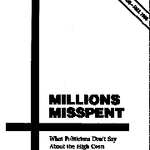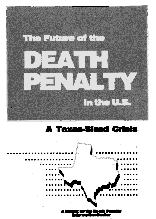DPI Reports
Below are reports released by the Death Penalty Information Center since its inception, covering subjects such as race, innocence, politicization, costs of the death penalty, and more. When opening a report, please allow the report page to load fully before selecting links to sections or footnotes. Most of these reports are also available in printed form from DPIC. For a copy of one of these reports, e‑mail DPI. For bulk orders, please download our Resource Order Form.
Reports are separated into Year End Reports, In-Depth Reports, and Special Reports. In-Depth Reports are DPI’s signature long, thorough reports on major death-penalty issues. These include “The 2% Death Penalty,” examining geographic arbitrariness in capital punishment, and “Behind the Curtain,” covering secrecy in the death penalty system. Special Reports are shorter, and typically address a specific event or question. These include DPI’s explanation of the 2017 spate of executions that were scheduled in Arkansas, and our analysis of the largest number of executions performed on a single day.
Reports: 66 — 70
Feb 01, 1995
On the Front Line: Law Enforcement Views on the Death Penalty
–Janet Reno, Former Attorney General of the United States…
Read MoreNov 01, 1994
Millions Misspent: What Politicians Don’t Say About the High Costs of the Death Penalty
Across the country, police are being laid off, prisoners are being released early, the courts are clogged, and crime continues to rise. The economic recession has caused cutbacks in the backbone of the criminal justice system. In Florida, the budget crisis resulted in the early release of 3,000 prisoners. In Texas, prisoners are serving only 20% of their time and rearrests are common. Georgia is laying off 900 correctional personnel and New Jersey has had to…
Read MoreMay 01, 1994
The Future of the Death Penalty in the U.S.: A Texas-Sized Crisis
Texas is the nation’s foremost executioner. It has been responsible for a third of the executions in the country and has carried out two and a half times as many death sentences as the next leading state. Death warrants are being signed at an unmanageable pace, yet the Texas death row is bulging with unprecedented numbers of inmates. But this accelerated form of justice comes at a price. The rest of the country should heed the warning of the Texas experience before…
Read MoreMar 01, 1994
Racial Disparities in Federal Death Penalty Prosecutions 1988 – 1994
– Former U.S. Supreme Court Justice Harry A. Blackmun, Feb. 22, 1994…
Read MoreDec 31, 1993
Innocence and the Death Penalty: Assessing the Danger of Mistaken Executions
In 1972, when the Supreme Court ruled in Furman v. Georgia that the death penalty as then applied was arbitrary and capricious and therefore unconstitutional, a majority of the Justices expected that the adoption of narrowly crafted sentencing procedures would protect against innocent persons being sentenced to death. Yet the promise of Furman has not been fulfilled: innocent persons are still being sentenced to death, and the chances are high that…
Read More



